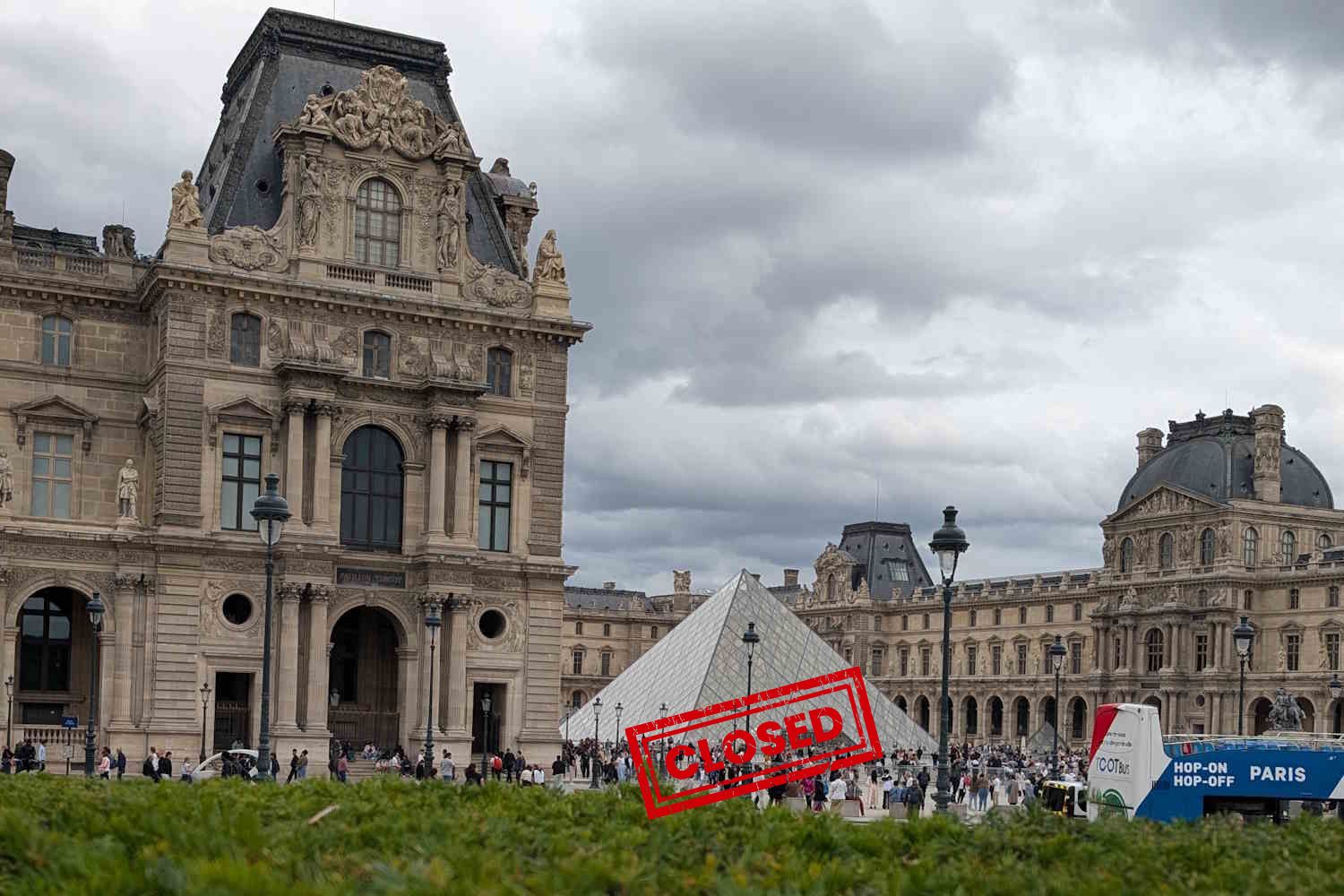The Louvre's recent strike reveals a deeper contradiction in cultural institutions—those who uphold the museum's mission of inclusion face unacceptable working conditions.

The glass pyramid of the Louvre, the architectural masterpiece by I.M. Pei, reflected nothing but disappointed faces and bewildered stares on Monday morning. Thousands of tourists found themselves facing the closed gates of the world’s most famous museum, victims of an unexpected strike that exposed the deep contradictions of an institution that preaches inclusion but practices the abandonment of its workers.
This shutdown didn’t come out of nowhere. Behind the gleaming facade of a museum that welcomed 8.7 million visitors in 2024, there is a very different reality: exhausted custodians, overloaded security personnel, and reception staff struggling to manage ever-increasing crowds. The breaking point came when an ordinary meeting turned into a silent revolt.
A growing discontent
Sarah Sefian from CGT-Culture gave voice to a long-standing dissatisfaction. The reception agents, the guardians of the rooms, and all the staff responsible for granting daily access to some of the world’s most valuable works of art said enough was enough. This wasn’t just a union protest but a profound existential divide that lies at the heart of modern cultural institutions.
The Louvre’s structural crisis and poor working conditions
Today, the Louvre presents itself to the world as a cutting-edge museum, attentive to the rights of minorities, sensitive to the needs of disabled visitors, and promoting progressive values through inclusive exhibitions and events. Yet, the very people who make this mission possible every day are living in conditions that even unions deem unacceptable. It’s yet another example of an institution that focuses on its public image while forgetting the human foundation upon which it stands.
The Louvre’s structural crisis is no secret. In January, director Laurence des Cars sent an alarming memo to the Ministry of Culture, describing a building in increasingly poor condition. Water leaks threaten priceless works of art, catering spaces are insufficient, and restrooms are inadequate for the millions of visitors who flock to the museum every year. This situation turns a visit into a struggle for both tourists and staff.
Louvre nouvelle renaissance project

@GREENME
The government’s response to this crisis is the Louvre Nouvelle Renaissance project, a renovation plan worth €700-800 million ($755-860 million) that aims to transform the museum by 2031. Impressive figures, but for those dealing with immediate emergencies every day, they sound like distant promises. As Sefian pointed out, six years of waiting is unthinkable when the pressure is unbearable today.
Overcrowding represents the central issue of the crisis. The 30,000 daily visitor limit imposed by the museum’s management is a temporary measure that doesn’t address the root problem: the Louvre has become a victim of its own success. Three-quarters of the visitors come from abroad, turning the museum into a must-see stop on mass tourism itineraries that generate enormous profits but deplete human resources.
On Monday afternoon, while unions were negotiating with management, the scene in front of the pyramid told a telling story. American tourists nervously checked their smartphones, Japanese families tried to reschedule their tight itineraries, and organized groups wandered in the chaos of Paris. All were united by the same disbelief: how could the symbol of global culture close without warning?
A larger contradiction in the cultural world
The Louvre’s protest reveals a larger contradiction running through the contemporary cultural world. Museums have transformed into mass entertainment machines, capable of attracting millions of visitors and generating considerable profits. However, they often fail to ensure dignified conditions for those who make their daily operation possible.
The case of the Louvre shows how the rhetoric of inclusion and openness can coexist with practices that exclude exactly those who should be at the center of attention: the workers. While the museum organizes events to celebrate diversity and hospitality, the staff who should embody these values are crushed by unsustainable work rhythms and inadequate facilities.
A temporary solution, not a final one
The museum’s reopening on Monday afternoon represented only a temporary respite. The underlying issue remains unresolved: how can the cultural mission of a global institution be reconciled with the well-being of the people who make it work every day? The answer cannot be limited to future investments or renovation projects. It must start with the recognition that behind every masterpiece displayed, there is a person who deserves respect and dignified working conditions.
The paradox of the Louvre being closed to protect those who open it to the world every day may be the most profound lesson visitors could take home: the most beautiful art is worth nothing if those who safeguard it can’t do so under humane conditions.
